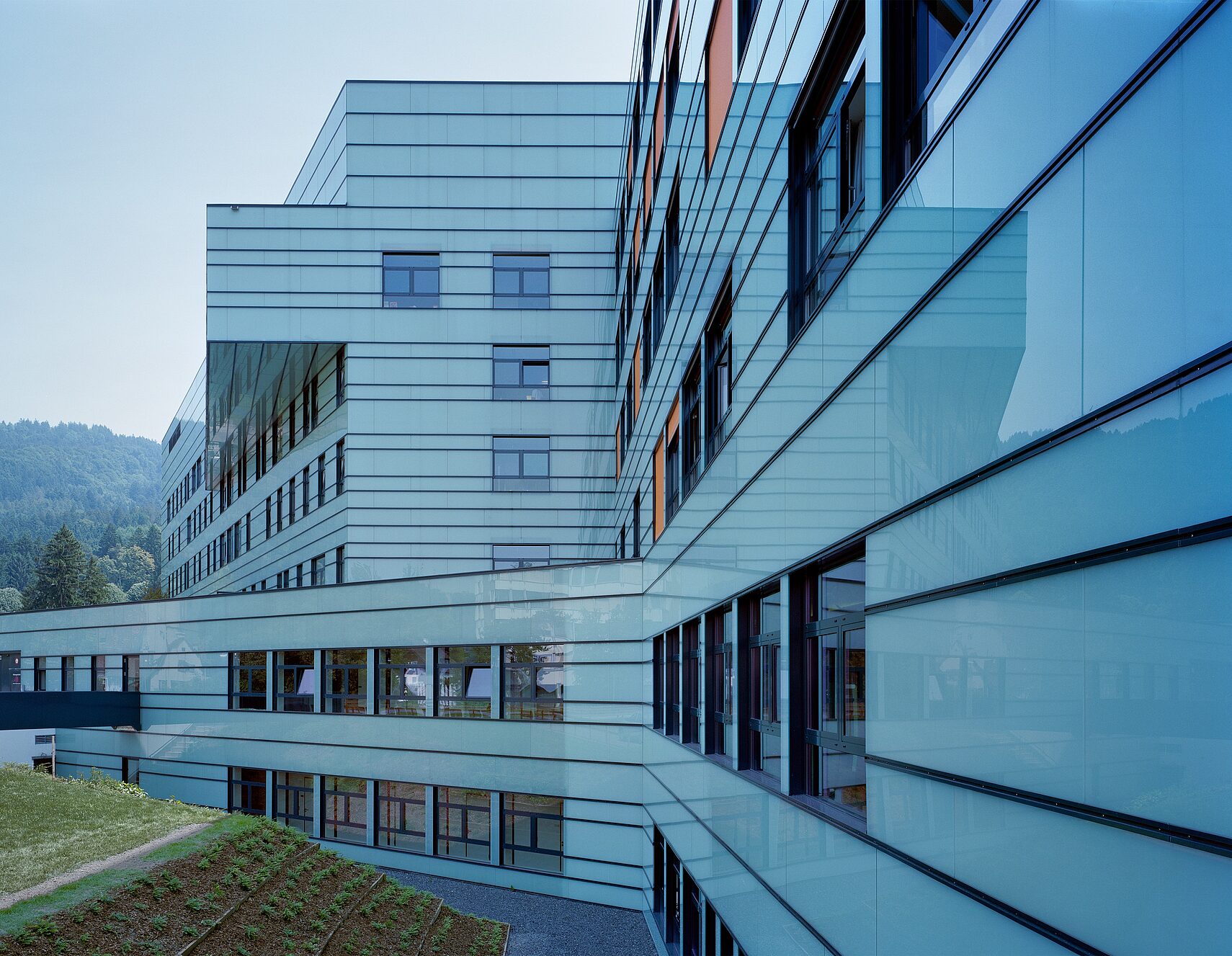More content
Health

The remit at Bregenz Provincial Hospital was to devise a plan for the refurbishment and extension of a 275-bed hospital without interrupting its day-to-day operation. In building design terms, the chosen solution had to bring together a disparate set of buildings that had developed over time, optimise the hospital’s internal organisation and improve the care environment for both patients and staff, combining modern, medical infrastructure, the economic use of resources and architectural quality. And all this so that, as well as meeting current building standards, the hospital would be ready to meet the challenges of future.


The refurbishment and extension work was carried out in several phases, starting with the construction of two new annexes to supplement the 1970’s-built main building: the western block containing a new main entrance, café and offices and the east wing comprising the A&E department and various wards. The whole is characterised by an innovative floor plan in which a light-flooded internal stairwell connects three floors of the gynaecology and paediatrics clinic, while a cantilevered section on the fourth floor creates more space in the Intensive Care Unit.
Operational restructuring and better A&E accessA number of functions were restructured and connections improved in order to optimise internal processes, resulting in shorter routes to emergency care zones. The helipad, a steel platform that sits astride the main building, is linked to the operating theatres on the ground floor via the central stairwell, and emergency access is now located in close proximity to the new A&E department.


An elegant facade of bright, opaque glass panels surrounds both the annexes and the existing building, now with upgraded thermal insulation. This uniform cladding gives the angular, multi-tiered structure an abstract, almost crystal-like, sculptural feel, creating a calm yet eye-catching building that stands out from the surrounding mass of disparate residential buildings.
Better facilities, attractive views, a pleasant atmosphere
The patient rooms, too, were gradually refurbished and reorganised. They are now larger and more comfortable, with beds facing the windows. Clear functional organisation, the creation of an attractive environment and the “greening” of the views from the wards were all key factors in designing the outdoor areas. Inside, high-quality materials and friendly colours create a pleasant atmosphere throughout the hospital that plays its part in the healing process.
Insights
The particular challenge on this project was reconciling the client’s aesthetic requirements, the “feel” it wanted to create, with the demanding medico-technical, nursing and hygiene requirements.